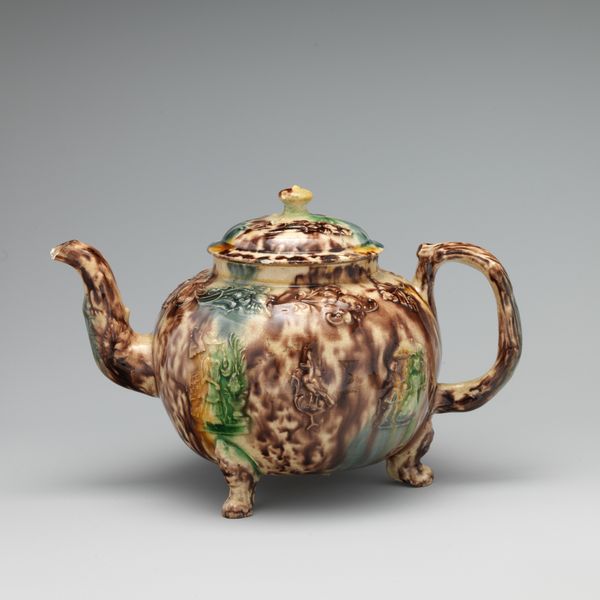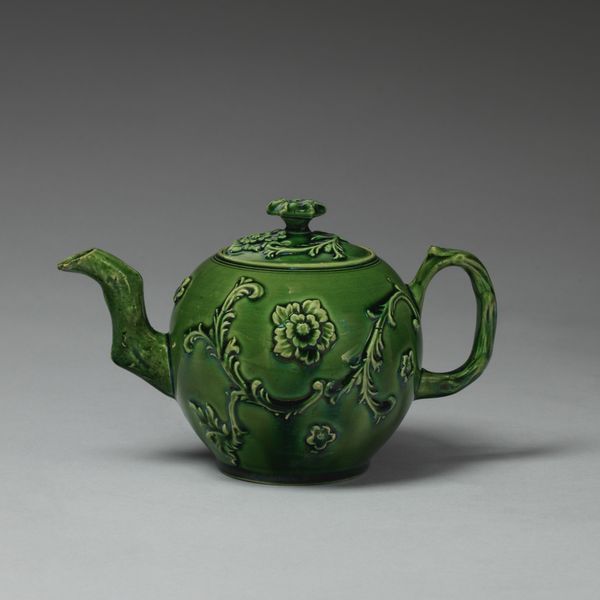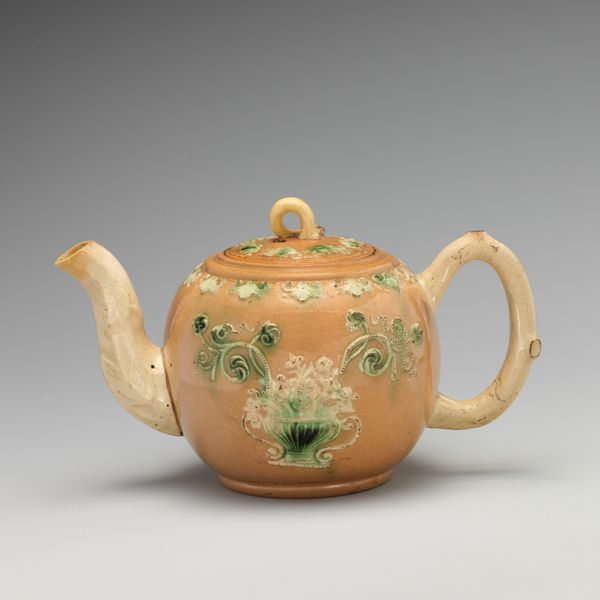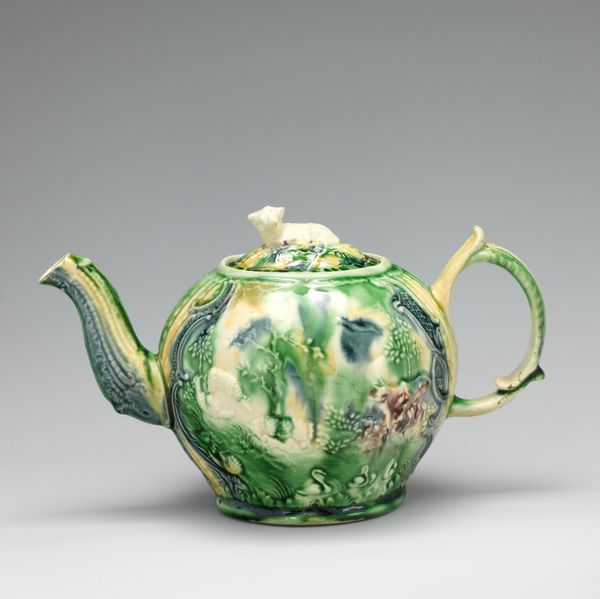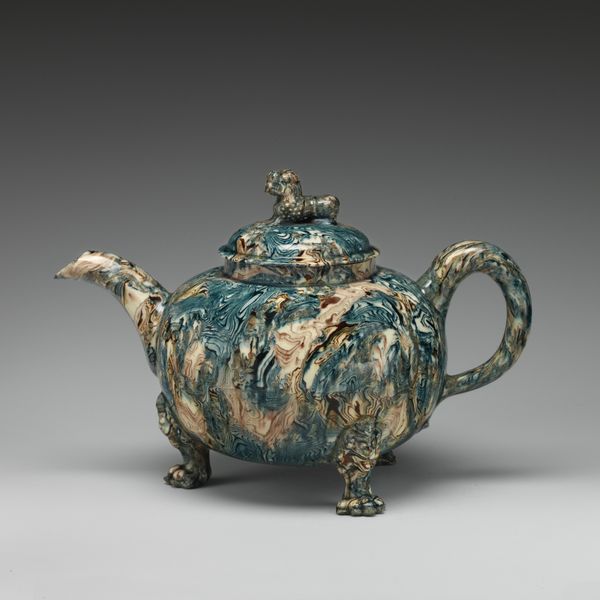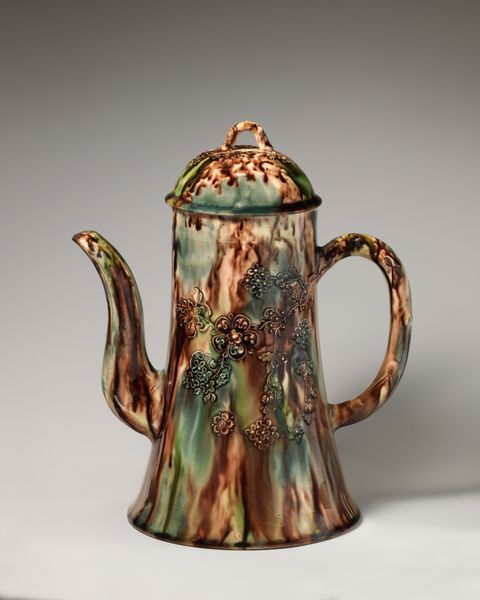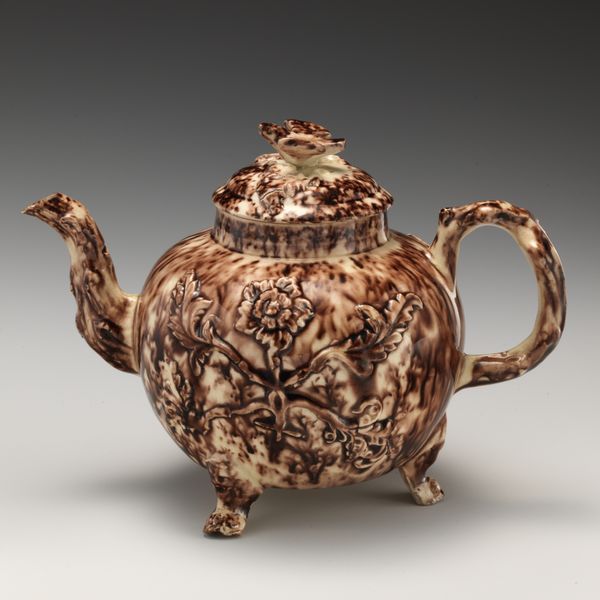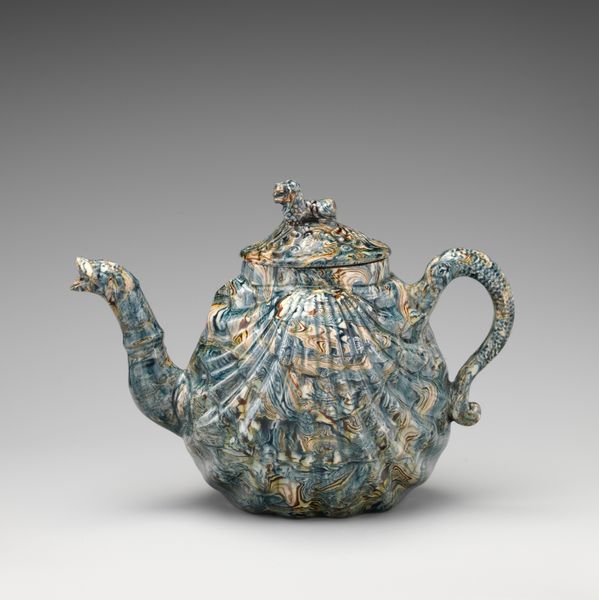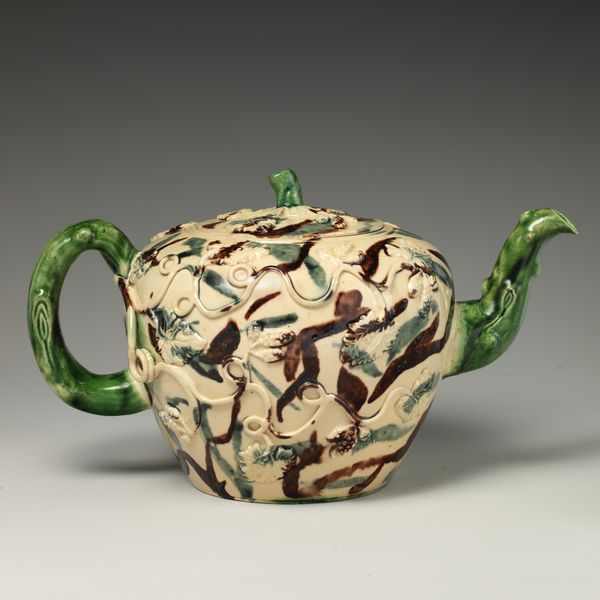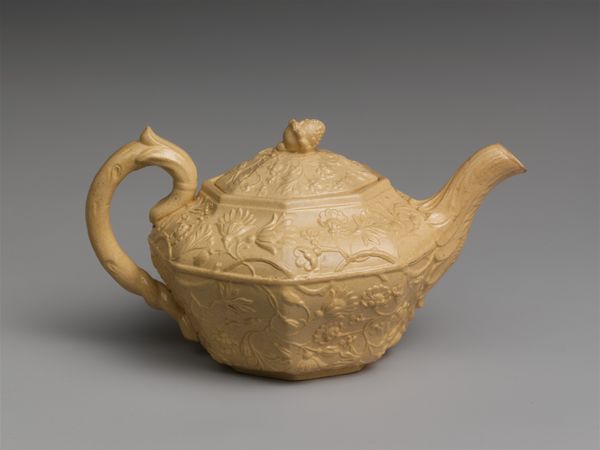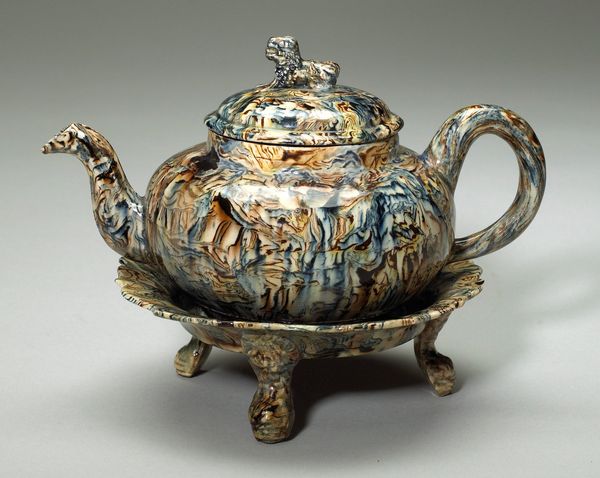
ceramic, sculpture, wood
#
ceramic
#
sculpture
#
wood
#
decorative-art
Dimensions: Height: 7 1/4 in. (18.4 cm)
Copyright: Public Domain
Curator: Let’s turn our attention to this exquisite “Punch Pot," a product of the Whieldon type workshops, crafted between 1745 and 1760. It resides here at the Metropolitan Museum of Art. Notice the sinuous lines, the sculptural qualities of the applied decoration, and the intentionality behind the glaze effects. Editor: Ooh, it feels like walking through an enchanted forest! Dark and moody but also full of these little bursts of unexpected color, like finding wildflowers in the shadows. It’s heavier than it looks, too. I wonder what stories it could tell. Curator: Indeed. The chromatic complexity emerges through careful layering and manipulation of metallic oxides in the glaze. Consider how the lead glaze interacts with the earthenware body to yield the specific aesthetic result, how the dappled surface alludes to the aesthetic values of naturalism so prized in its time. Editor: Totally, the mottled glaze and the leafy vines crawling across the surface definitely capture that whimsical, almost overgrown feel of nature taking over. The contrast between the darker clay and those pale flower blooms is really striking, too, adding depth to the overall piece. But were these colors meant to deceive as well as please? Curator: The application of what we now recognize as deception would be anachronistic, although one could analyze it semiotically in such terms. The intentional contrast heightens the sculptural relief. And the ceramic itself… what associations does the chosen medium evoke, particularly with the burgeoning English pottery industry of the 18th century? Editor: It makes me think of fancy tea parties gone wild! Can you imagine the scandals this pot witnessed over some rowdy parlor games? What parties did they even serve punch from? The craftsmanship just oozes sophistication. You're holding history, quite literally. Curator: And from a formal standpoint, observe the interplay between the horizontal and vertical elements and how that informs our reading. Each formal decision builds on what the last established in this object’s life. Editor: In the end, even after picking at the petals a little, this artifact makes us question history, beauty and what wild ideas can start brewing over a spot of punch. So go on, dear listener, find something new in an old classic; start up your pot.
Comments
No comments
Be the first to comment and join the conversation on the ultimate creative platform.
